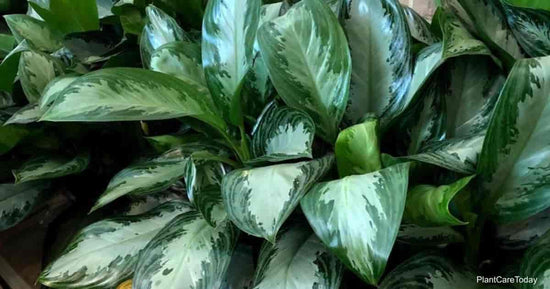Winter brings a set of challenges for beloved indoor houseplants. On top of adjusting your care routine, the combination of chilled temps, less sunlight, and dry indoor air can lead to stress fairly quickly. Let's explore the signs of winter stress in indoor houseplants, along with tips on how to support them during this season.
Yellowing Leaves
This change can be caused by over or under watering, or a response to changes in temperature and light. To address this, adjust your watering routine to the specific needs of each plant and consider moving them to spots where they can receive maximum sunlight during the shorter winter days.
Brown Leaves
During the winter, brown edges along the leaf are most likely a sign that the air is too dry for your plant. Brown leaves can also mean that the plant is underwatered. Assess the conditions of your environment to know what step you should take next. Keep in mind that if you use indoor grow lights, they can cause brown leaves if too bright or too close to your plant.
Leaf Drop
Leaf drop in the winter is most common if your plant is in a drafty area or if the temperature has fluctuated. This is especially common with more sensitive plants like the Fiddle Leaf Fig. Ensure your plant is away from windows, air vents, and doors to the outside during the cold months. For good measure, we recommend also inspecting your plants for signs of pests, which are also common during the winter months.
Curled Leaves
When we use indoor heat sources, like space heaters or central air, the environment becomes drier than our plants prefer. Low humidity leaves can cause leaves to curl. Some plants may also pucker or wrinkle in dry air. Boost humidity with misting, a humidifier, or pebble tray.
Wilting
Houseplants may show signs of wilting if the air in your home is too dry or if they are not receiving adequate water. Adjust the humidity levels and water your plants as needed. Ensure proper drainage for your pots to prevent waterlogged soil, as this can also contribute to wilting.
Fungal Issues
Winter conditions can be ideal for fungal diseases. Ensure good air circulation around your plants, avoid overcrowding, and be mindful of overwatering. If you notice any signs of mold or fungus, address the issue promptly with appropriate fungicides and adjust your watering routine.
The best way to get ahead of winter blues for your plants is to never miss a beat when it comes to their care. Although they require slightly less from you during this rest season, they still need your support! Learn more about winter care here.





